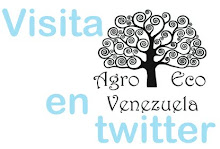miércoles, 5 de agosto de 2020
Confronting Complexity in Agroecology: Simple Models From Turing to Simon
John Vandermeer, 2020
There are two interrelated
issues that seem to be emerging as central to the understanding of
ecological systems more generally, particularly relevant to
agroecosystems. First is the key insights of Alan Turing in which
spatial pattern emerges from a system in which there is a reaction
between two objects, both of which are diffusing in space, a pest and
its natural enemy, for example. Secondly, as small-scale farmers make
complex decisions about their farm's ecosystem management, they are
forced to contemplate market forces as much as the background ecology.
This necessity automatically involves a time lag in that remuneration
for produce is realized substantially after the decision to plant is
made. Here, behavioral economics intersects with non-linear ecological
dynamics to produce an expectation of chaotic patterns. It is suggested
that these two core ideas, spatial dynamics (e.g., Turing's dynamic
instability in space) and chaos (e.g., Simon's constrained rationality
in farm decisions) form a qualitative theoretical foundation for
understanding the ecology of agroecosystems.
From the locust plagues with which Yaweh threatened
Egypt to the coffee rust disease that threatens the supply of the
world's most important drug, the idea of an agricultural pest gives rise
to the idea of control, the holy grail of Western civilization—control
of nature, that is. I often wondered why Yaweh caused the Red Sea to
part so as to provide the Israelites passage, when he could just as
easily have sent a big boat for them, given his previous experience with
gigantic boats. But the truth is that parting of the seas represents
much more of a symbol, the control of nature, whereas a boat would have
implied the rather unimpressive “working with nature.” Floating on water
is far less impressive than making it behave miraculously. It was not
really just about saving the Israelites, it was as much an attempt to
prove dominance over nature.
Not all the world was as credulous as the forebears of
the Judeo/Christian/Islamic tradition. Original people of the Guatemalan
highlands apparently had no need for such a deity to solve their pest
problems—they had no pests. When Helda Morales asked them what pests
they had in their agricultural system, they all claimed to have no
pests, yet when questioned about what “insects” they had in their
system, they listed a host of species, many of which were known to
Western science as “pests.” When asked why these insects were not pests,
as the international experts claimed, these peasant farmers explained
that they manage their farms so as “not to attract pests in the first
place” (Morales and Perfecto, 2000).
Now known as the “Morales effect,” many traditional
farming systems take this point of view. Structure the agroecosystem
partly with the idea of not giving home or sustenance to organisms known
to generate problems. If some insects or bacteria or viruses are known
to be enemies of the plants or animals you are trying to culture, find a
way of culturing such that these potential pests are “managed” in such a
way that they never turn their actual status of “potential pests” into
the actual status of “pest.”
As Albert Howard and Gabriella Mathais discovered when
they went to India to “teach” the farmers the “modern ways” of
agriculture that the empire had developed (Vandermeer and Perfecto, 2017),
they saw the Morales effect operating in many ways, especially with
regard to nutrient cycling, but more generally as a system that takes
the natural systems of nature as givens, then prods and pokes them,
using the understanding of the underlying operation of the ecosystem, to
plan their farm. It is worth noting that the Howard/Mathais team was
gaining its insights about ecology in the late nineteenth century, only a
few decades after the word itself was coined by Haeckel (1870),
and well before ecology became known as a scientific discipline. Their
insights are even more remarkable given the virtual absence of
background knowledge from formal science. Traditional knowledge is
sometimes that way.
Now, after two centuries of very smart people doing very
intelligent research in the field of ecology, we can say that the
scientific background we have to work with is magnitudes more
sophisticated than the tools that Howard and Mathais had to work with.
Today we can combine traditional understanding of food provisioning with
the partial understanding we have from formal science to produce what
Richard Levins referred to as a gentle, thought intensive form of
environmental management.
.
Suscribirse a:
Enviar comentarios (Atom)










No hay comentarios:
Publicar un comentario